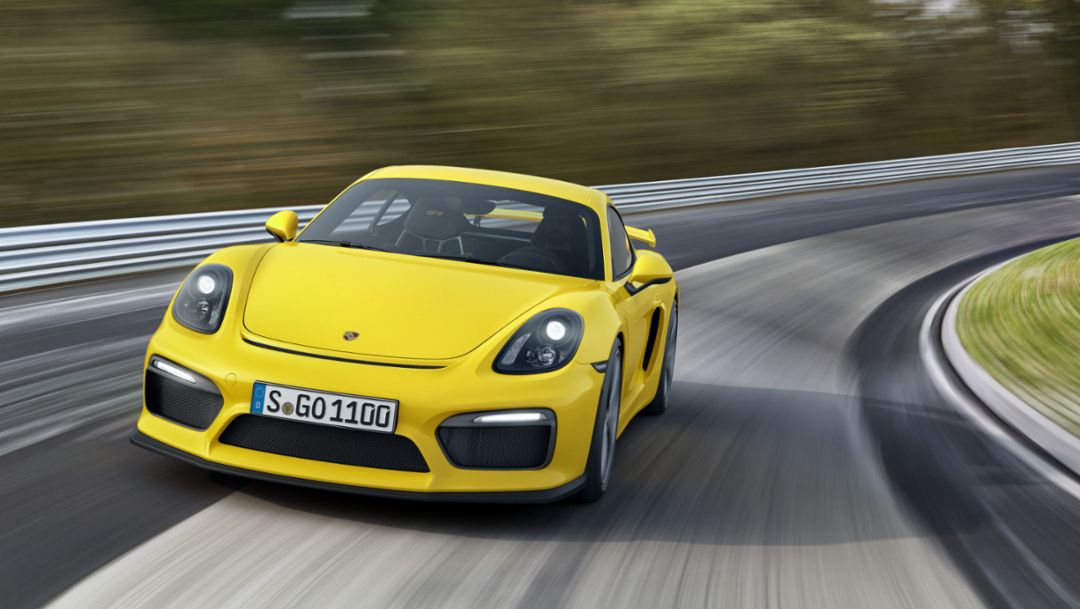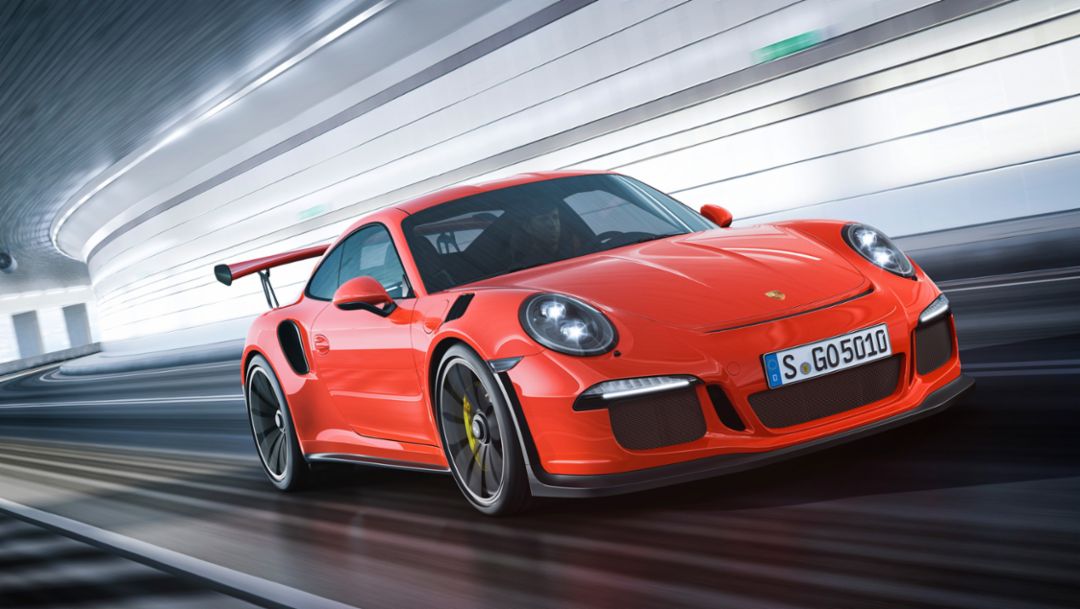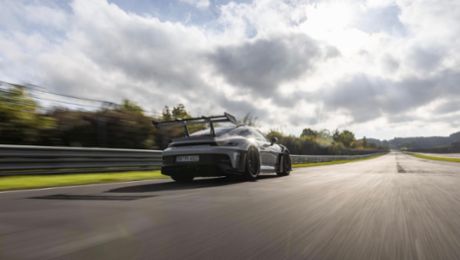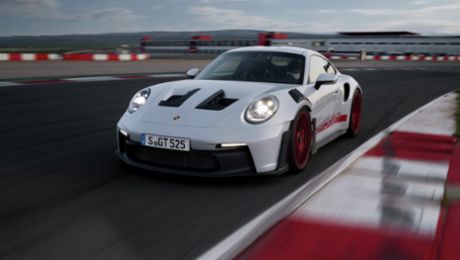The new entry model into the top league of Porsche sports cars is the Cayman GT4, which is the first member of the GT family to be based on this mid-engine coupe. A racing version of this model will also make its appearance later this year. The new 911 GT3 RS is traditionally the top model of the GT family from Porsche, and it represents the highest stage of street-legal sports cars before entering the category of pure race cars.
GT sports cars by Porsche are the product of technology transfer from race cars to production sports cars, and they embody the most passionate connection between everyday driving and the circuit racetrack. Four out of five drivers of Porsche sports cars with the GT classification also use them on the race track. The two premieres in Geneva continue the Porsche tradition of presenting motorsport highlights at the automobile exhibition that is held in the spring at Lac Lemans. In previous years, the 911 GT3, 918 Spyder and 919 Hybrid made their debuts here.
Switzerland has always been a classic Porsche country with a rather high density of sports cars from Stuttgart-Zuffenhausen: the approximately eight million residents have around 39,000 Porsche cars, and over 80 per cent of them have all-wheel drive. The constant growth curve in this country is especially welcome at Porsche: in 2014, 2,871 vehicles were delivered to Swiss customers; this represents a gain of around 29 per cent compared to the prior year. It is notable that the Swiss are very enthusiastic about high performance sports cars such as the 911 Turbo and 911 GT3 models, which represent over 40 per cent of all 911 vehicles sold. In general, the Swiss market shows preferential demand for Porsche models with top-level engines that have extensive equipment options. Many of them are customised by Porsche Exclusive. The Macan Turbo, for example, is the bestselling version of the new compact Porsche SUV in Switzerland.
In the new Cayman GT4, Porsche is impressively exploiting the potential for driving dynamics in mid-engine sports cars. Its lap time of seven minutes and 40 seconds on the North Loop of the Nürburgring sets the new performance benchmark in its segment. This highperformance sports car differs significantly from other Cayman models. Its 3.8-litre engine comes from the 911 Carrera S and produces 283 kW (385 hp). This the only Cayman to develop downforce at both axles, due to its completely new front end with a front spoiler that extends low to the ground, an additional air exhausting vent in front of the bonnet and a rear wing. The chassis has a 30 mm lower ride height and very large brakes that are tuned for motorsport use with components from the 911 GT3.
Ever since 2003, Porsche has been developing an RS version – based on the most current 911 GT3 – which is the highest performance stage of 911 sports cars with a naturally aspirated engine. It is positioned just below purebred race cars. The new 911 GT3 RS will be the fifth generation of this high-performance sports car model to be launched. Its lap time of seven minutes and 20 seconds on the North Loop of the Nürburgring is even faster than the historic record lap time of the Carrera GT super sports car, which was seven minutes and 29 seconds, yet it offers the everyday practicality that is typical of all street-legal Porsche sports cars.
Its drive system consists of a six-cylinder naturally aspirated engine with direct fuel injection and a power output of 368 kW (500 hp). Its chassis and aerodynamics were tuned for optimal circuit racetrack performance. Its intelligent lightweight design peaks with a magnesium roof, and carbon fibre reinforced polymer (CFRP) was used to produce its front lid, front wings, rear lid and rear wing.
Consumption data
911 GT3: Combined fuel consumption: 12,4 l/100 km; CO₂ emissions: 289 g/km
911 GT3 RS: Combined fuel consumption 12.7 l/100 km; CO₂ emission: 296 g/km
Cayman GT4: Combined fuel consumption: 10,3 l/100 km; CO₂ emission: 238 g/km
918 Spyder: Combined fuel consumption: 3,1 – 3,0 l/100 km; CO₂ emissions: 72-70 g/km; Electricity consumption 12.7 kWh/100 km
918 Spyder (Weissach package): Combined fuel consumption: 3,0 l/100 km; CO₂ emissions: 70 g/km; Electricity consumption: 12.7 kWh/100 km
Macan Turbo: Combined fuel consumption: 9,2 – 8,9 l/100 km; CO₂ emissions: 216 – 208g/km






